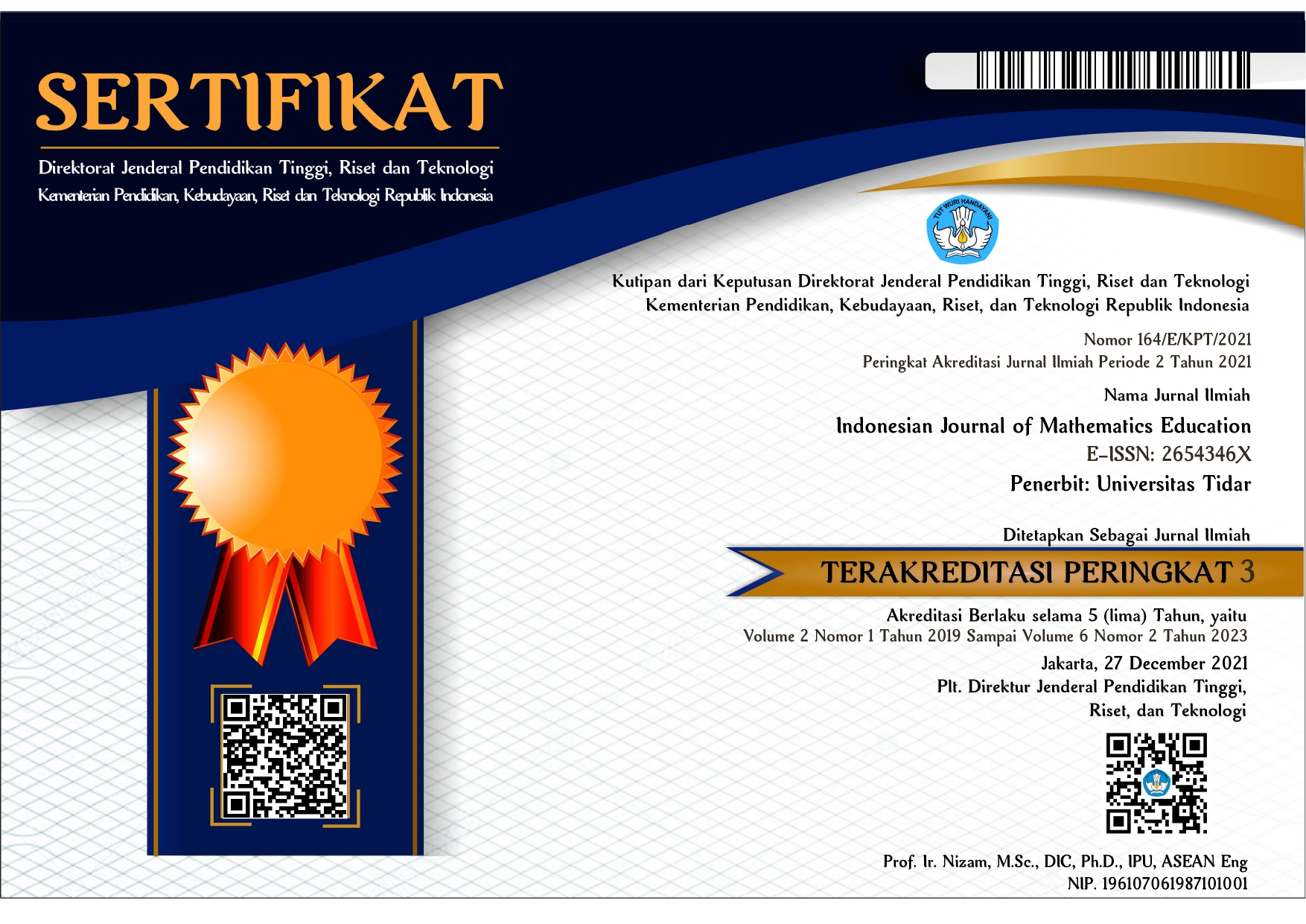The Use of Assistive Learning Technology in Learning Mathematics for Hearing Impairment Students
Abstract
The problem in this study is the limitations of mathematics learning media that are suitable for the conditions of deaf students. So, the researcher developed an assistive math teaching aid for deaf students. This study aimed to determine the effect of using assistive learning technology given to hearing impairment students. This research focuses on improving the representation ability of hearing impairment students on the topic of fractional operations. This research is a quantitative study with a pretest-posttest control design. This research was conducted on hearing impairment students with mild to severe categories without intellectual impairment. The number of hearing impairment students involved was 12 students at a special type B school in Magelang City, Indonesia. The N-Gain test was used in this study to measure the improvement in the representation ability of hearing impairment students. Based on the results of the study, it was concluded that assistive learning positively affected the representation ability of hearing impairment students. Based on the results of the N-Gain test, an increase of 0.972 was obtained. In addition, the use of assistive learning technology provides a learning experience that trains the independence of hearing impairment students. The teacher's role as a facilitator in the classroom can be maximized because topics can be accessed anywhere and anytime.
References
Abdallah, E. E., & Fayyoumi, E. (2016). Assistive technology for deaf people based on android platform. Procedia Computer Science, 94, 295–301. https://doi.org/10.1016/j.procs.2016.08.044
Adebisi, R. O., Liman, N. A., & Longpoe, P. K. (2015). Using assistive technology in teaching children with learning disabilities in the 21st century. Journal of Education and Practice, 6(24), 14–20.
Akpan, J. P., & Beard, L. A. (2014). Assistive technology and mathematics education. Universal Journal of Educational Research, 2(3), 219–222. https://doi.org/10.13189/ujer.2014.020303
Buehler, C., & O'brien, M. (2011). Mother's part-time employment: associations with mother and family well-being. Journal of Family Psychology, 25(6), 895-906. https://doi.org/10.1037/a0025993
Cook, A. M., Polgar, J. M., & Encarnação, P. (2020). Sensory aids for persons with visual impairments. In A. M. Cook, P. Encarnação, & J. M. Polgar, Assistive Technologies: Principles & Practice (Fifth Edition), Elsevier, pp. 321–355. https://doi.org/10.1016/b978-0-323-52338-7.00016-0
Davison-Mowle, J., Leigh, G., Duncan, J., & Arthur-Kelly, M. (2018). Description of the direct teaching activities of itinerant teachers of deaf and hard of hearing students teachers of deaf and hard of hearing students. Deafness & Education International, 0(0), 1–18. https://doi.org/10.1080/14643154.2018.1442908
Ismaili, J., & Ibrahimi, E. H. O. (2017). Mobile learning as alternative to assistive technology devices for special needs students. Education and Information Technologies, 22(3), 883–899. https://doi.org/10.1007/s10639-015-9462-9
Marschark, M., & Knoors, H. (2012). Educating deaf children: language, cognition, and learning. Deafness and Education International, 14(3), 136–160. https://doi.org/10.1179/1557069x12y.0000000010
Marschark, M., Morrison, C., Lukomski, J., Borgna, G., & Convertino, C. (2013). Are deaf students visual learners? Learning and Individual Differences, 25, 156–162. https://doi.org/10.1016/j.lindif.2013.02.006
Nugraheni, A. S., Husain, A. P. & Unayah, H. (2021). Optimalisasi penggunaan bahasa isyarat dengan sibi dan bisindo pada mahasiswa difabel tunarungu di Prodi PGMI UIN Sunan Kalijaga. Holistika Jurnal Ilmiah PGSD, 5(1), 28-33. https://doi.org/10.24853/holistika.5.1.28-33
Pinoa, M. A., & Hendry. (2021). Development and application of h5p content in lms-based e-learning using moodle. Jurnal Teknik Informatika dan Sistem Informasi, 8(2), 647-663. https://doi.org/10.35957/jatisi.v8i2.931
Rosayanti, S. M., & Mulyono, M. (2019). The mathematical representation ability based on student’s learning independence on problem based learning with scaffolding approach. Journal of Mathematics Education, 8(2), 105-110. https://doi.org/10.15294/ujme.v8i2.32210
Tony, M. P. (2019). The effectiveness of Assistive Technology to support children with specific learning disabilities: Teacher perspectives a systematic literature review school of education. Master Thesis 15 Credits Interventions in Childhood Spring semester 2019, Jonkoping University. https://www.diva-portal.org/smash/get/diva2:1321161/FULLTEXT01.pdf
Wongkia, W., Naruedomkul, K., & Cercone, N. (2012). I-Math: Automatic math reader for Thai blind and visually impaired students. Computers and Mathematics with Applications, 64(6), 2128–2140. https://doi.org/10.1016/j.camwa.2012.04.009
Published
How to Cite
Issue
Section
Copyright (c) 2023 Indonesian Journal of Mathematics Education

This work is licensed under a Creative Commons Attribution-NonCommercial-ShareAlike 4.0 International License.









